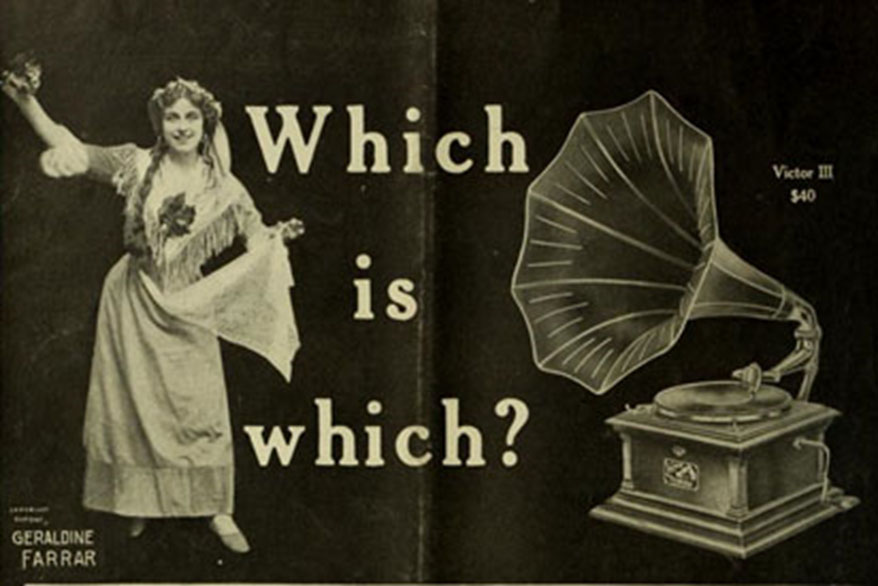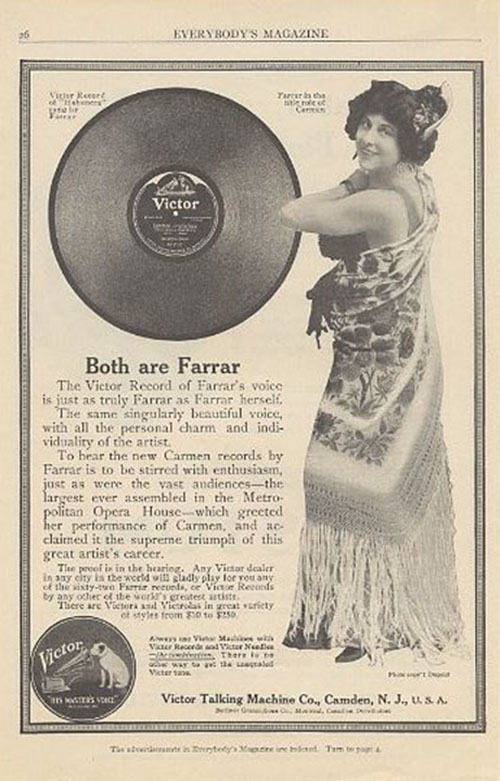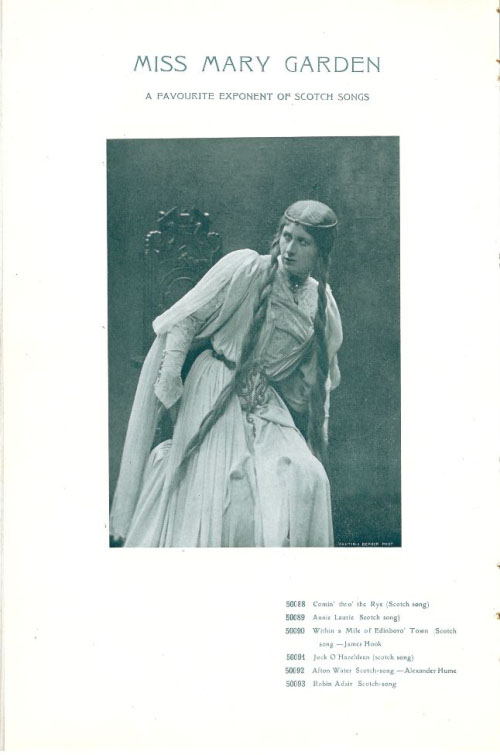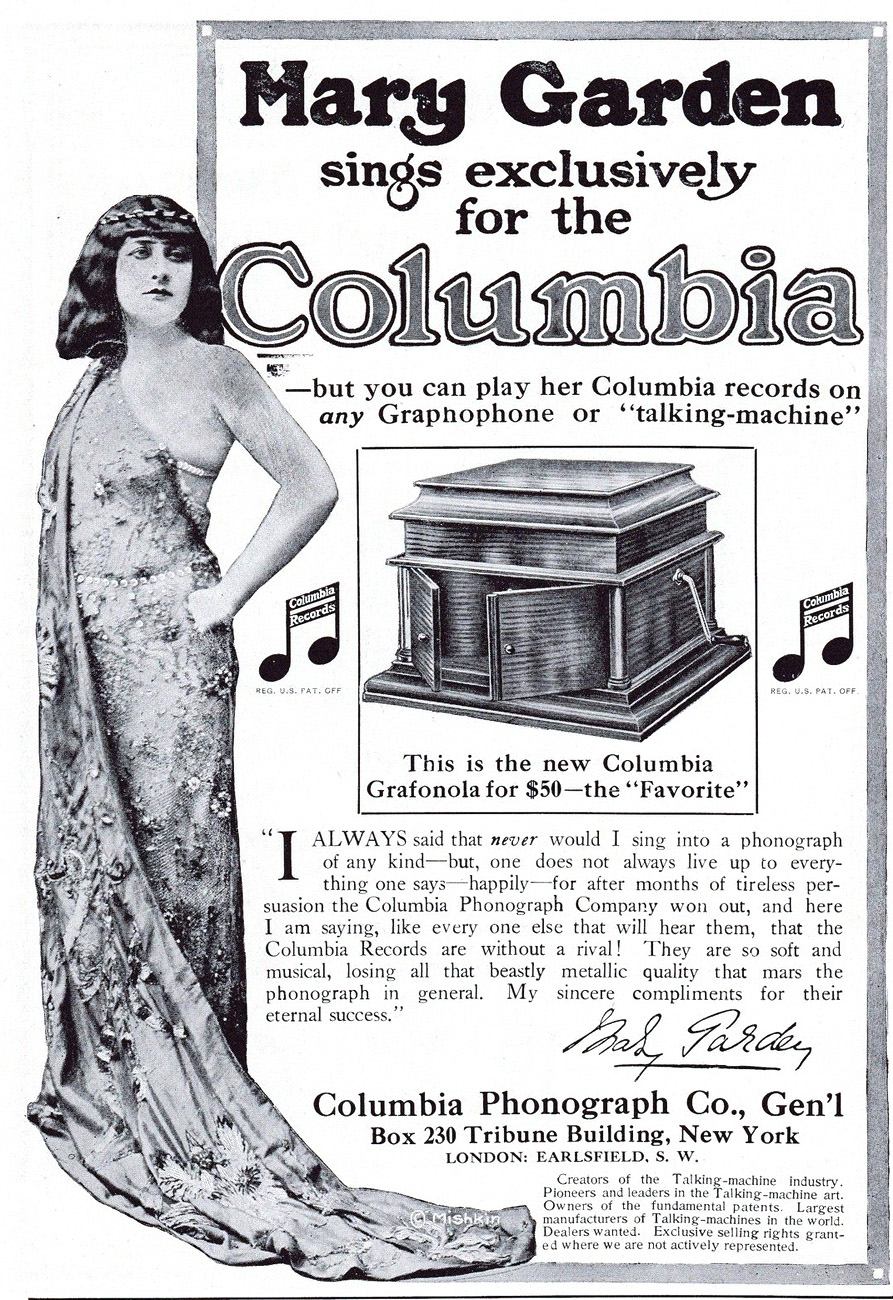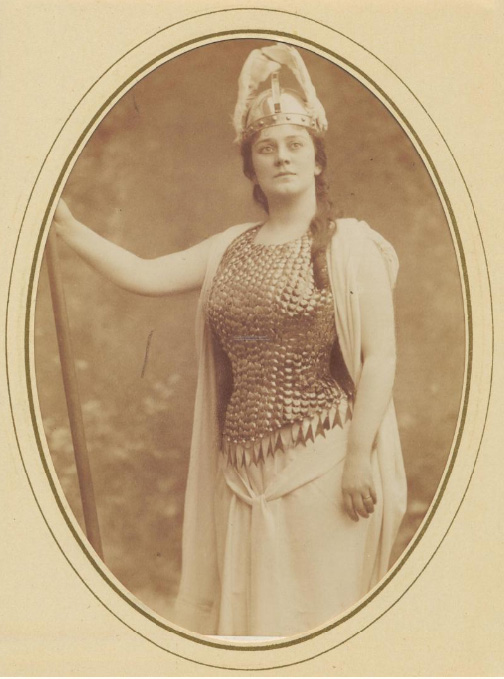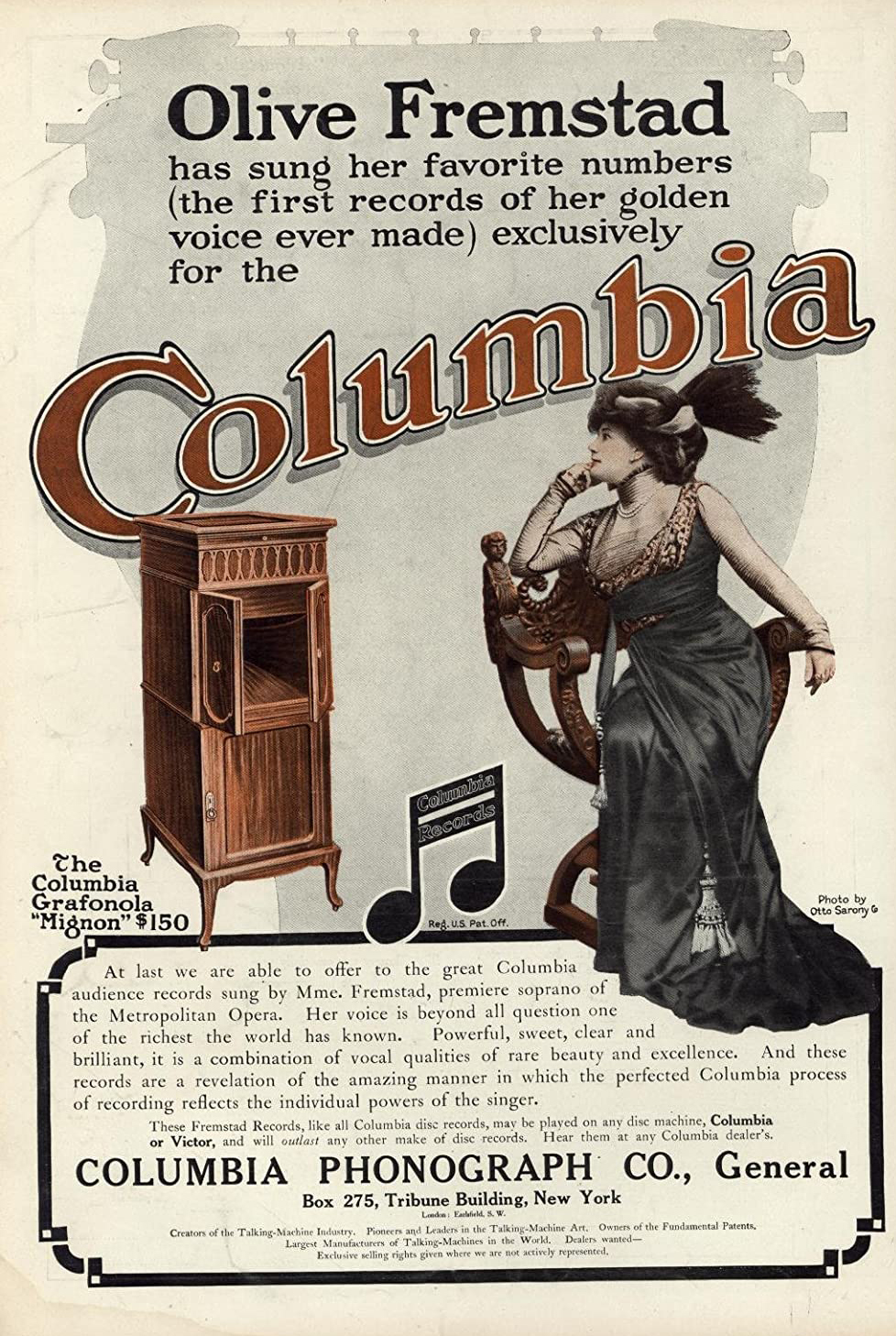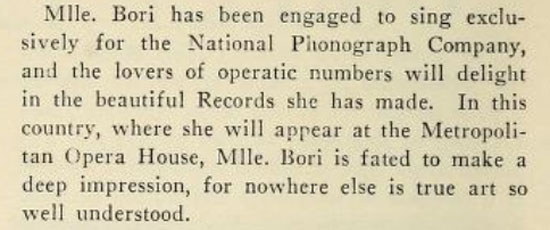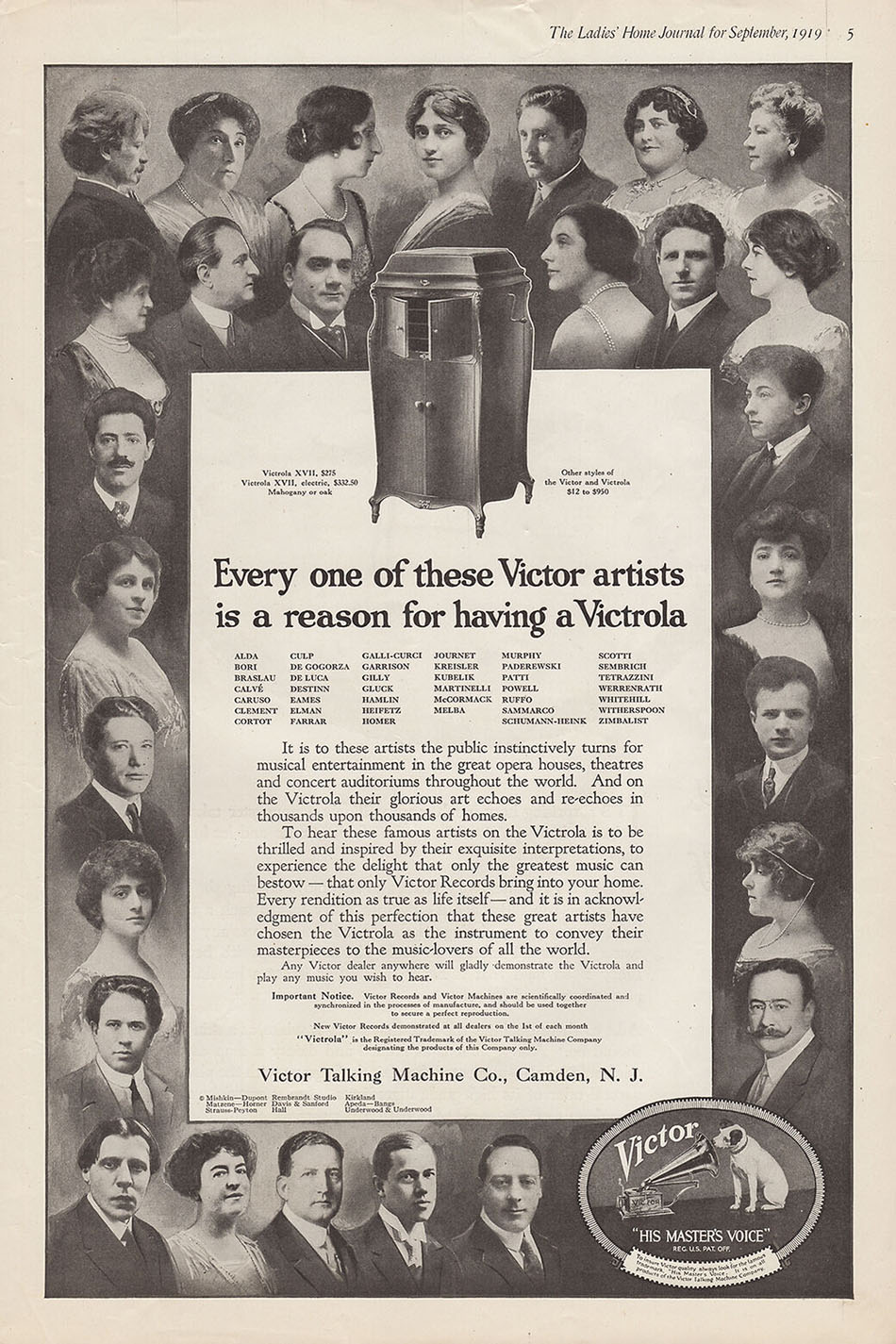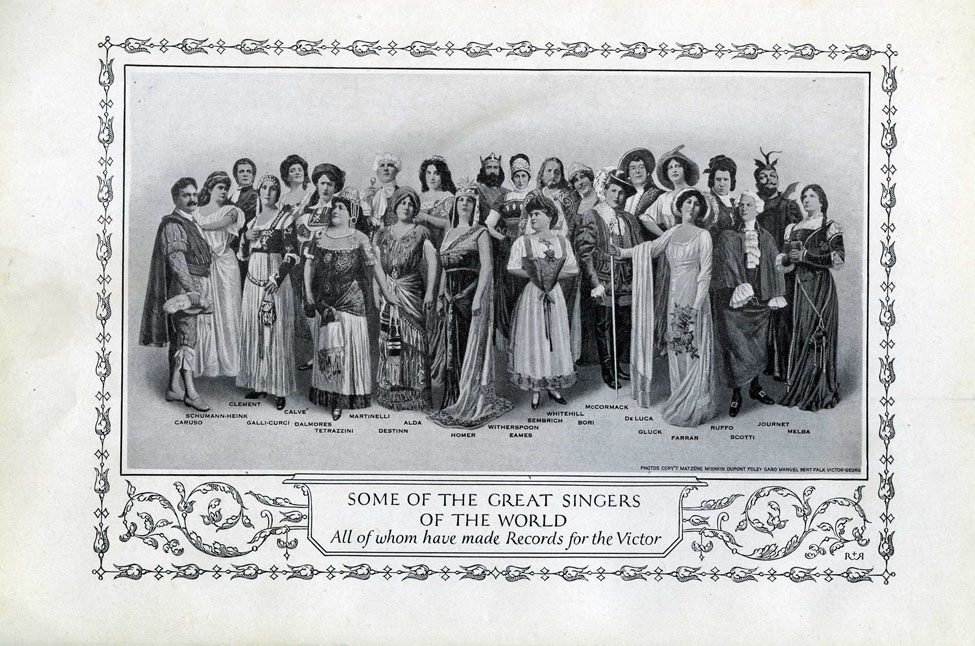Willa
Cather's Prototypes Who Were Recording Artists.
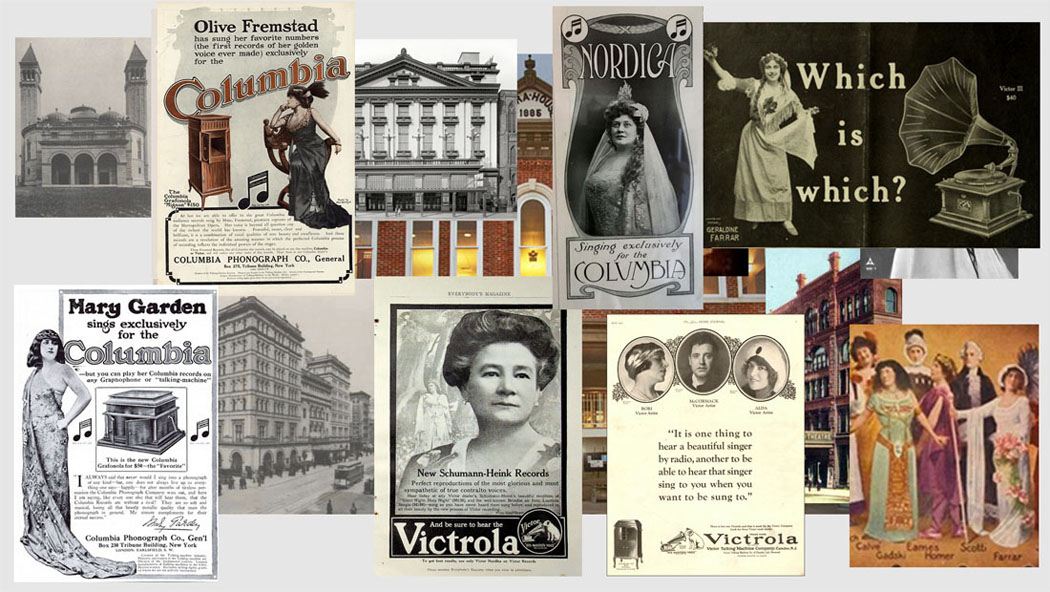
FARRAR.
FREMSTAD. NORDICA. GARDEN. SCHUMANN-HEINK. BORI.
By Doug Boilesen, 2020
Willa Cather loved
opera and was a devoted patron of opera wherever she lived or
travelled. She had friendships with opera stars, understood the
world of opera, knew the challenges of being an artist in a consumer
world and of being a woman artist in male dominated domains, and
wrote multiple stories where a prima donna or an aspirational
artist was the central character.
Six of Cather's opera
singing performers identified by scholars as
likely prototypes also made phonograph records and appeared
in phonograph ads. This gallery features those six prototype artists.
By appearing in popular
culture magazine ads the artists added their celebrity status,
artistic reputations, and the prestige of opera to promote key
phonograph industry themes; namely, that the world of entertainment,
highlighted by opera, was available to anyone, anytime and anyplace.
The "Stage
of the World', as it was advertised, could now be in your
own home where you would be more comfortable than in a theatre;
it was more convenient than going to a theatre, no expensive tickets
to buy, unlimited reperotoires, and always the best seat in the
house.
The
promotion of opera by the phonograph industry also had direct
and subtext ad campaigns suggesting recorded sound was the equivalent
of living artists. Victor's 1915 Munsey's ad summarized
it clearly: "The Victor Record of Farrar's
voice is just as truly Farrar as Farrar herself."
This page is an overview
with a few phonograph connected examples for each artist. The
majority of the examples are in the artist specific galleries
using the following links
to the six prototypes.
Geraldine
Farrar (one of the prototypes for Kitty Ayrshire in
Scandal and A Gold Slipper and interviewed by
Cather for her article Three American Singers).
Lillian
Nordica (prototype for Cressida Garnet in The Diamond
Mine).
Mary
Garden (prototype for Eden Bower in Coming, Aphrodite!
and one of the prototypes for Kitty Ayrshire in Scandal).
Olive
Fremstad (prototype for Thea Kronborg in The Song
of the Lark and interviewed by Cather for her article Three
American Singers).
Ernestine
Schumann-Heink (prototype
for "soprano soloist" in Paulís Case).
Lucrezia
Bori (prototype for "Spanish woman" in Scandal).
A Timeline of Cather
and the Phonograph
Cather's first collection
of short stories (The Troll Garden, 1905) were written
in the early years of the phonograph entering the home.
In the following decade,
when Cather was writing many of her opera and aspirational artist
stories e.g., The Song of the Lark (1915) and publishing
her collection of short stories Youth and Bright Medusa
(1920), the phonograph was becoming the definitive home entertainer.
Electrical recordings were introduced in 1925 and the prevalence
of radio in the 1930's would further redefine how the public experienced
sound.
The evolution of the
phonograph from 1900 to 1920 included advertisements made by six
of Cather's opera prototypes. Those ads also reveal aspects of
the new century's consumerism.
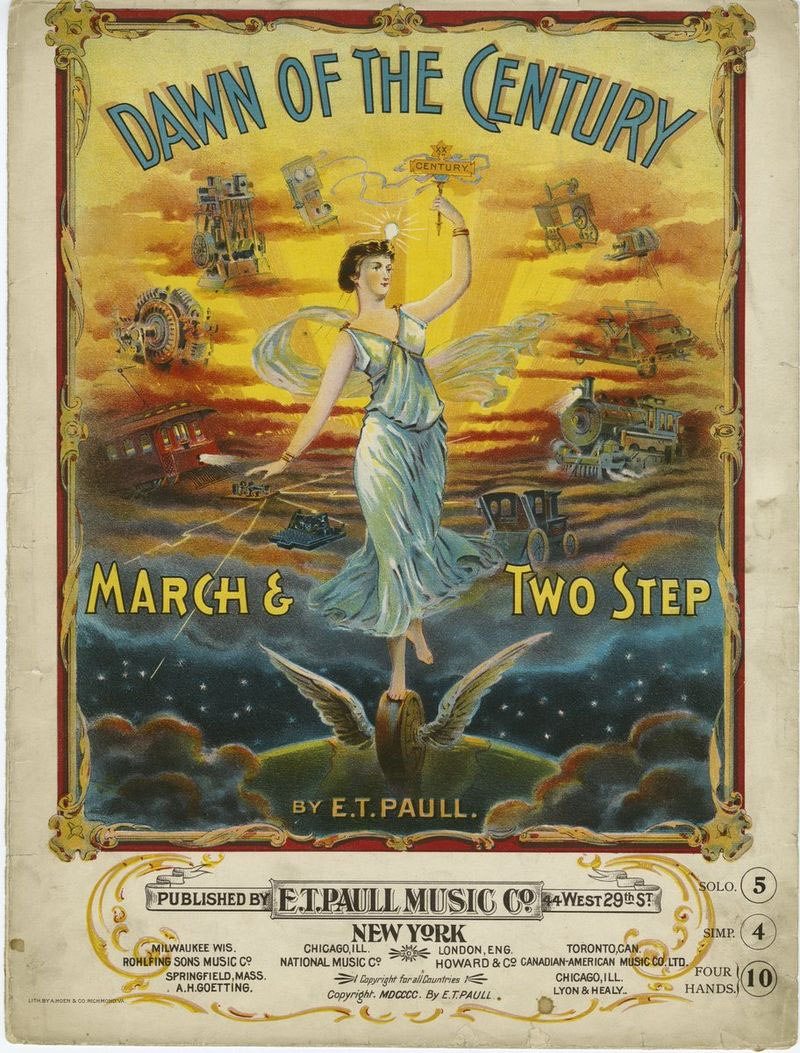
E.T. Paull - Sheet
music published by E.T. Paull Music Co., New York, 1900. (Sheet
Music from University of Indiana).
Opera records: Victor,
Columbia and Edison
In promoting opera
The Victor Talking Machine Company led the way with its advertising
campaigns featuring Caruso and "the greatest artists of the
world." Farrar, Schumann-Heink and Bori would all record
for Victor. Schumann-Heink also did five records for Columbia.
Columbia was a strong
competitor and promoted the exclusivity of their 'greatest artists
of the world" whenever they could. Nordica, Garden and Fremstad
would be featured Columbia artists. (3)
Edison didn't have
as many of the first-tier opera stars and seems to have been more
interested in advertising the technical accuracy of his phonograph
than promoting world-renowned artists. Even the repertory of those
Edison celebrity artists have been described as "confined
to hackneyed operatic arias and quasi-popular encore pieces"(3A).
Perhaps most revealing, the Edison business approach regarding
these recordings was said to have been "the flat statement
that the reproduction of operatic and symphonic music did not
represent a sound commercial proposition -- in America."
(3B)
Despite Edison's opinion
about the lack of commercial aspects for opera on records in 1914
Edison was making movies and an article in The Talking Machine
World stated that Edison was working every day to improve
the "Talkie-Movies" and that opera recording was important
to him.
"Opera
and drama for the poor workingman and his family for a nickel
is what we should have, and what we eventually will have,"
Mr. Edison said.
For over 40 years
Edison was also a major advertiser in the world of recorded sound
which did include 'grand opera' and the 'famous
artists' he did recruit.
Mary Garden recorded three records for Edison in 1905 and Lucrezia
Bori made thirty recordings for Edison between 1910 and 1913.
(3)
The Mapleson Cylinders
Recordings were made
between 1900 and 1903 by the Metropolitan Opera House's librarian
Lionel Mapleson using an Edison "Home" Phonograph purchased
for $30.00. Remarkably, one hundred and twenty-six cylinders are
known to have survived with Ernestine Schumann-Heink and Lillian
Nordica among those recorded voices.
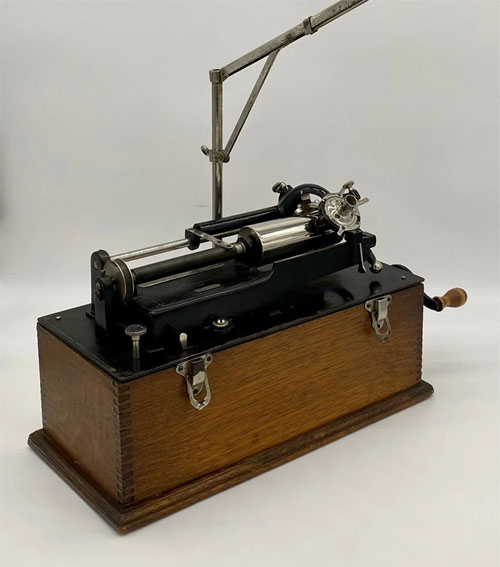
Edison Home Model
A 1900.
Soprano Lillian Nordica,
with contralto Ernestine Schumann-Heink and tenor Georg Anthes
can be heard
HERE from the 'live" performance
originally captured on cylinder by Mapleson at the Metropolitan
on Monday evening, February 9, 1903.
The re-recording onto
78 rpm records from these cylinders was started in 1937 by William
H. Seltsam. For that story see "The
Mapleson Cylinders that Lived in Bridgeport: William H. Seltsam,
Lionel Mapleson, and Ghosts of the Golden Met" by Professor
Jeffrey Johnson, 2018.
Johnson's summary of
the meaning of those records hearkens back to a fundamental
theme newspapers included in their earliest articles about
Edison's new invention when Johnson wrote "These recordings
are audio sťances; they can summon ghosts."




